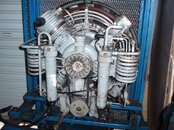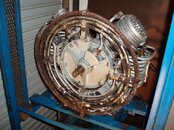Wondering if I am worrying about nothing... My compressor, a DIY system, has the intake to the moisture trap higher (about 10") above the output of the compressor. Thus I am thinking that the compressor has to push condensed water in the output line all the way up to the moisture trap intake -- which does not seem optimal. Not quite sure what the implications are of having the line from the compressor to the moisture trap full of water.
I have the opportunity to reconfigure the setup and thinking of making it so the compressor output is higher than the moisture trap intake to allow easy drainage of water from the compressor's output.
Does this make sense ? or I am worrying about nothing ?
I have the opportunity to reconfigure the setup and thinking of making it so the compressor output is higher than the moisture trap intake to allow easy drainage of water from the compressor's output.
Does this make sense ? or I am worrying about nothing ?






